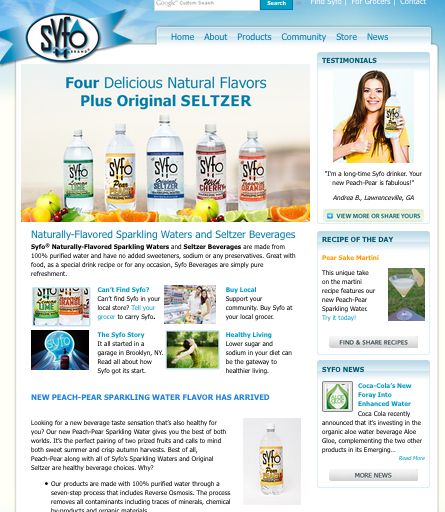I’ve had many clients come to be for search engine optimization recently and what strikes me is how so many of them still view SEO through the lens of 2009. What I mean by that is that they’re trying to rank high for certain keywords in general search to get some traffic, without any local geographic overlay while competing against thousands for businesses. And for many of us long-suffering Jacksonville Jaguar fans should know, that’s the recent equivalent of the Jags beating Tom Brady in the Super Bowl — four years in a row. A lot has changed since Google came on the scene, heck my iPhone now has more computing power than my 2003 Mac. And search has gotten more sophisticated too, in the more intelligent answers it gives to people’s queries and most importantly, where they’re looking for answers. So these days search is driven primarily by local search, and performance in local search means ranking high on the map. The tag line for this site — putting your business on the map — was not put there by accident. So for local businesses, here are few key things to keep in mind regarding SEO. First, for most businesses, as we’ve seen, local SEO is going to carry the day. To be strong in local search results, you have to optimize your website for location information and set up your Google My Business listing properly, post to it often and get as many reviews as you possibly can. The reason for this is that to get any action at all from search, you have to appear in the “three pack” that’s tied to the map at the top of the results page. Even being at #5 in the general search results below is not likely to get you that much action. And on mobile (where the majority of searches occur) that three pack is often all that people will see. In this scenario your website is there mainly to support and strengthen your Google My Business listing on the map, so the stronger your website is for the term (what the user is looking for) the more credibility you have with both the user and Google’s algo. You’ll notice...
Read MoreThe USPS will probably be heartened to learn that I’m getting more and more inquiries regarding physical direct mail — you heard right, the old fashioned stuff made of paper that arrives in your mailbox and delivered by an actual mail carrier. Just like late great folk singer John Prine, the singing mailman! So I thought now would be a good time to publish here information I posted in a business forum: Good direct mail begins and ends with targeting. The more you parse the available data to identify the best prospects, the better the chances of getting them to open the piece, engage, respond and convert. Make sure you purchase a high-quality list. This will ensure deliverability, improve your response rate and reduce your cost-per-acquisition. Design your mailer to get the recipient inside the envelope or package, but contrary to popular belief this doesn’t necessarily mean flashy or unique. It could be intriguing, dimensional, it could have an outer headline that hits home or it could be simple and plain as hell. I’ve had all these approaches work. It depends on the audience, what you’re selling and the overall strategy. The content and the messaging inside must hit the target directly as soon as they open the mailer as something that has value, speaks to their needs and is worth their time. Response mechanisms should be clear and easy, but what can sometimes lift response is making them physically engage somehow, by sending something in with a code or by going to a specific response page online as examples. Track both responses and conversions. Follow-up mail to everyone but have a separate messaging strategy for no response, responded but not converted and conversions (the latter for loyalty or up-selling). So there you have it. Send me a postcard, drop me a line, give me a call, stating point of view as the Beatles sang (continuing our musical references). Fill out the form or call me at 904-744-8877 before y0u try your next direct mail...
Read MoreYes it’s small business week again, brought to you by the SBA. Like many other designated days, weeks or awareness months, Small Business Week is designed to bring awareness to the need to support small local businesses. Small Business Week has grown over the last 50 years out of a Presidential Proclamation and like many of those proclamations, it’s the kind of sentiment that we call can agree and feel good about. The problem, of course, is that there’s a big difference between a feel-good concept and getting people to change their buying behavior, which is really what the week is supposed to be about. People’s buying behaviors have changed dramatically over the last 20 years, driven by price, online reputation and convenience, and those trends will only grow stronger (especially during the age of COVID, you can read more about that in my post here). It’s not so much that people are forgetting Main Street, it’s more that Main Street is everywhere now and we don’t have to leave our homes to visit it. So how can you stand out and grab your share this week and every week? Here are a few things to think about: Visibility: This is the number one factor. If people don’t know that you’re around they can’t do business with you, and today people find out who you are, where you are, how to reach you and learn more about your reputation through online local search. And being seen in local search begins and ends with a strong Google My Business presence with lots of reviews (look for a future post with more details on how to build this). Convenience: It can be hard to compete with Amazon when people can order from Amazon in their pajamas and the truck with that smiley, arrow logo on it arrives the very next day, or even the same day. But as a local small business, you can still offer an online ordering option on your website, pre-ordering or reservations, and you can make the in-store experience as smooth, pleasant and enriching as possible. There’s nothing more convenient than that. Selection: It’s true you can find just about anything there is to be found online but it...
Read MoreNowadays to don’t even have to finish that phrase, but I’ll say it anyway, shop local in the age of COVID-19. Or more specifically, getting customers to shop local in the age of COVID-19. With the holidays just a few weeks over the horizon, this is the time when blogs and business networking sites light up with the topic of getting people to buy local. The trend toward online shopping has been flummoxing small businesses for years, and the challenge has grown exponentially with the advent of the novel coronavirus that has people looking for ways not to shop physically. But as the song goes, surrender, surrender, but don’t give yourself away. There are still some simple things you can do to give yourself a fighting chance, so let me share with you some ideas I posted to a local business networking site: Build a strong local search presence — This one is the most obvious and is kind of what we do here. This involves having an effective Google My Business listing, accurate listings in local directories, a mobile-friendly website that is optimized for local search, reviews, reviews and more Google reviews. Have some e-commerce capability. It’s so turnkey now that it’s easier to do than ever. Also, explore ways to leverage delivery service and options. Team up with other local businesses in y0ur area who are hopefully doing the above. Create some cross-synergy between the businesses in your group (related business types or nearby businesses could create offers for shopping at each others locations for example). Share customer bases for cross promotions, email marketing and direct mail. Build a simple loyalty or rewards program for shopping at businesses within the group. Not all of this will necessarily move mountains, but it beats sitting behind the counter doing the crossword puzzle. If you have any questions call me 904-744-8877. I’m not going anywhere....
Read MoreThis is an update of a post I wrote on my corporate blog last year and it dovetails perfectly with my last post on back-to-school. No, the title is not a typo. I did mean “hollowed” rather than “hallowed”. It seems that as more years go by, these three-day summer holiday weekends (Memorial Day, the Fourth when it falls right and Labor Day) are further and further removed from the origins and intent of the events that spawned them, so they have been sort of hollowed out. Now they seem to be uniformly about beer (nothing wrong with that) barbecues and much-needed time off for the beleaguered American worker, who works longer and harder than anyone in the industrialized world (if they get any time off at all in this service economy). And mattress sales. I don’t know what it is about three-day weekends and mattress sales, but you could realistically change Memorial Day, Fourth of July and Labor Day to Mattress Sale Day One, Two and Three to avoid confusion. Labor Day in particular has been hollowed out by the fog of time. It was originally proposed by an American machinist in 1882 to celebrate workers and promoted by the American union movement. It was formally adopted as a Federal holiday in 1894. International Workers Day, celebrated pretty much by the rest of the world on May 1, actually has is its origins in an American event — the Haymarket Massacre in Chicago in 1886, when police fired on workers protesting for an eight hour workday, killing four. Still most Americans are unaware of the union and socialist origins of Labor Day, and a Republican lawmaker even went so far as to say that Labor Day is a chance to express appreciation for all those business owners that create jobs. Now I’m a business owner but even I went — huh? So what does all this mean to your communications? Well, usually people in business feel compelled to say something about a holiday that sounds wholesome and appropriate, like one client who on Memorial Day insisted on using that occasion to thank the brave men and women around the world who are protecting our freedom. Well Memorial Day...
Read More



